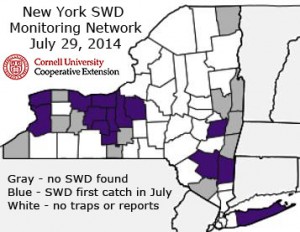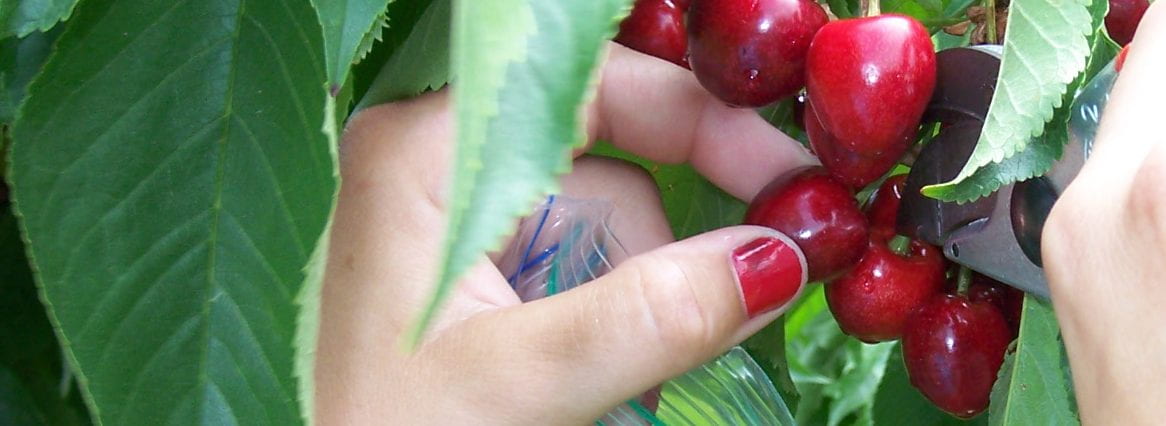The SWD monitoring network will continue trap counts until SWD is caught for two consecutive weeks, or until sustained trap catch. Sustained trap catch, in general, is used as an indicator that the insect being monitored can be consistently found in the area. If insects aren't caught in traps the week after first catch, this indicates that the prior week's catch was just a few early-arriving individuals, not yet a threat.
As of today, July 29, 2014, sustained trap catch has not been reached for any location in NY, indicating that we are in the "early arrival" phase of SWD populations in NY. The map below shows the counties in which SWD is at first catch. Although SWD was first caught in early July in Suffolk, Cayuga, and Onondaga Counties, none of those locations have had sustained trap catch, nor dramatic upswings in numbers of SWD caught in traps. Of the counties where SWD has been found, I would predict that Suffolk County (Long Island), and Cayuga and Ontario Counties (Finger Lakes) may reach sustained trap catch by the end of this week, August 1, 2014.

It is wise to hold off on beginning an insecticide program across all berries being grown on your farm. The reasons are two-fold, (1) it is essential to rotate between and among insecticide active ingredients to reduce the risk of insecticide resistance developing in SWD and (2) insecticide label restrictions may limit the amount any one active ingredient can be applied on a crop during the growing season. Combine this with the reality that berry crops continue to ripen over time making the harvest window often quite long and protracted. Thinking it through, it quickly becomes obvious that without careful planning and spray decision-making, a spray program for late maturing berries can be left without good options for crop protection at a time when SWD populations are climbing and insecticide protection is most warranted.
Few reports of egg-laying and early instar larvae in ripe berries have come in. And the proportion of the crop, if any, that is infested is very low. Management of SWD when it is at low population levels should focus on sanitation: clean picking, raking or sweeping up dropped fruit and crushing it on the ground; any practical solution against leaving this resource available for SWD to feed on and reproduce in that you can think of to implement on your farms should be explored.
Mowing, weed management, and opening the canopy with judicious pruning will help create micro-climates around the fruit with drier air, greater air movement, higher solar radiation, and hotter temperatures, all of which are less optimal for SWD adults.
Eliminate weed resources: pokeberry, honeysuckle, wild brambles, buckthorn, bittersweet nightshade. All provide an early- to mid-summer reproductive resource for SWD.
Because SWD arrival has been later this year than in 2013, we are all on edge. This year, more than in the past, it will be important for the members of the SWD monitoring network in CCE to report on sustained trap catch. Comments and input from the farming community are encouraged and welcome.

